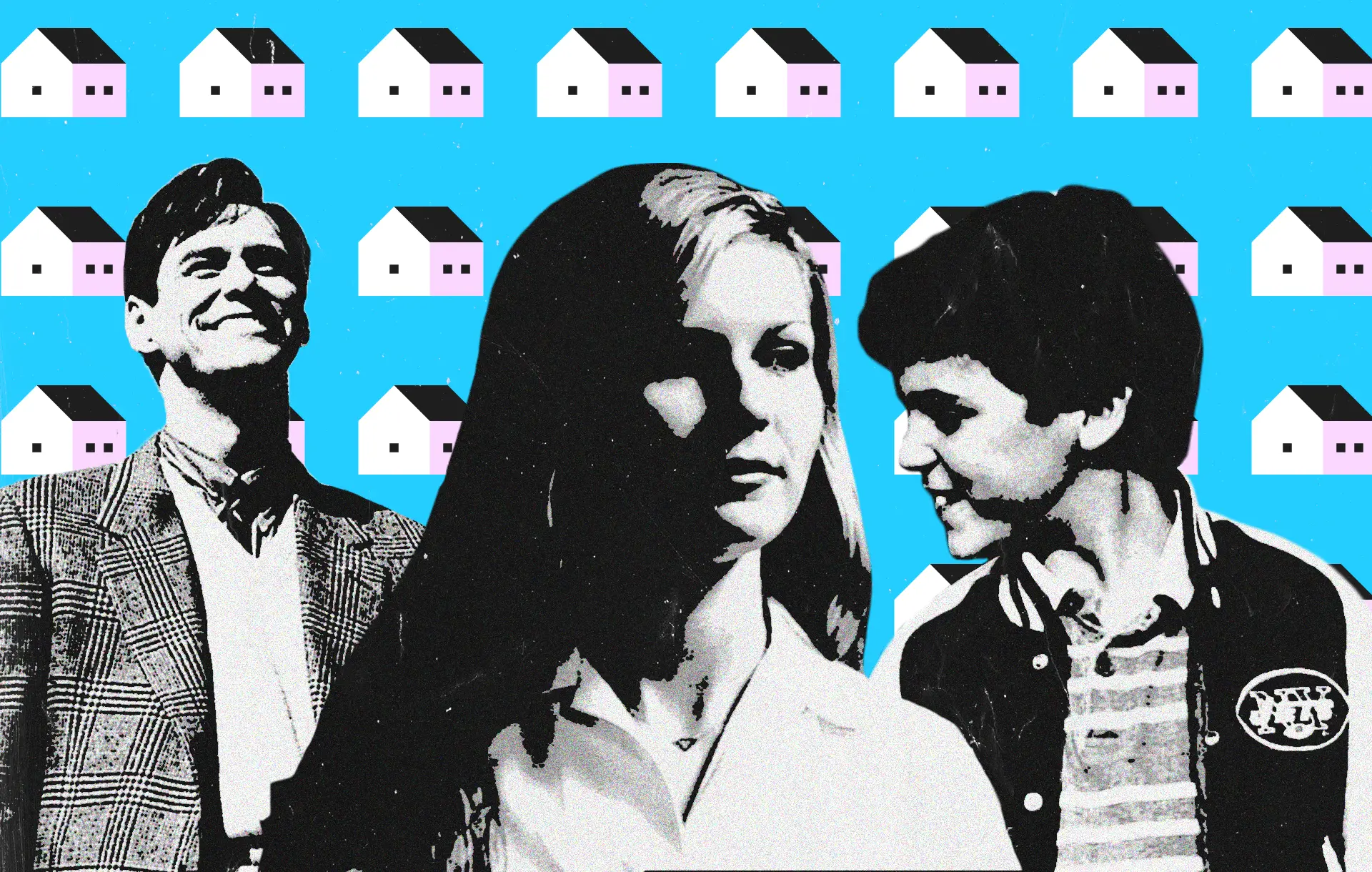Positive:
The Wonder Years
The Wonder Years begins in 1968. The title alludes to a more positive depiction of Suburbia: Suburbia 1.0. It offers a different perspective – that of an old man recalling his formative years growing up in the suburbs. Instantly, in the pilot, the protagonist, Kevin Arnold, confronts the hotly-debated nature of Suburbia:
“There’s no pretty way to put this… I grew up in the suburbs. I guess most people think of the suburb as a place with all the disadvantages of the city, and none of the advantages of the country. And vice versa. But, in a way, those really were the wonder years for us there in the suburbs. It was kind of a golden age for kids.”
Kevin’s privileged childhood wasn’t bogged down by the politics or the economic ostracizing of the place in which he lived
Kevin’s privileged childhood wasn’t bogged down by the politics or the economic ostracizing of the place in which he lived. Because why would a child? In retrospect, he addresses the critics of his beloved birthplace, recalling his first kiss with childhood sweetheart Winnie after consoling her for the death of her brother.
“Whenever some blowhard starts talking about the anonymity of the suburbs, or the mindlessness of the TV generation. Because we know that inside each one of those identical boxes, with its Dodge parked out front, and its white bread on the table, and its TV set glowing blue in the falling dusk, there were people with stories. There were families bound together in the pain and the struggle of love. There were moments that made us cry with laughter. And there were moments, like that one, of sorrow and wonder.”
E.T.
Suburbia is a place where traditions flourish. E.T. embraces this notion. Family dinners, regularly-scheduled programming, door-to-door trick-or-treating on Halloween. However, E.T. is an outsider who doesn’t belong in this neighborhood. Who doesn’t belong in Suburbia. He must be imprisoned by the government when exposed by the public, instead of doing what he wants and needs in order to survive and flourish. This dynamic is an allegory for illegal workers in middle and upper class suburbs. As is often the case, the government’s solution is self-serving and harmful to society. In the end, family prevails over the evil government suits in this family suburban fantasy.
The Goonies
The Goondocks of Astoria aren’t the suburbs. However, The Goonies is an example of how important it is to preserve culture and history. No Cuesta Verde. No wealthy residents driving out the lower-income ones. The Goonies is an underdog story about fighting for one’s home and what it stands for. On the other side of Astoria lies Hillside, the wealthy suburbs, where its residents threaten to build a country club over the Goondocks, uprooting the longtime working class residents, of which the Goonies belong. Not every housing development is viable, and not every developer succeeds. For every development deal fallen through, there’s a group of Goonies celebrating somewhere.
That ‘70s Show
The essence of That ‘70s Show, and it’s attitude towards Suburbia, is all in the theme song’s lyrics:
If there ever was a golden age of Suburbia, the 1970s was it. Before the vapidity turned entirely cynical and was clouded by Reagan’s return to the suburbs. When you could just hang out “down the street” and do the “same old thing” you do every week. These residents of this particular Wisconsin suburb passed their time by smoking pot. A lot of it. And sharing stories. And sleeping around. And gossiping. It was a groovy depiction of white suburban life. However, beneath the jubilee, there lied a sobering comment on the brutality and ethics of imperialistic war through Red’s struggling depression and detached demeanor.
Honorable Mentions:
Edward Scissorhands
Tim Burton insists that Edward Scissorhands isn’t meant to be a negative depiction of Suburbia, however, the film can be interpreted in a plethora of ways.
Please see the “Suburban Satire” section of The Visual & Thematic Motifs of Tim Burton – Part 1, for more about Burton’s noteworthy suburban satire.
Donnie Darko
Richard Kelly’s suburban satire layered with sociopolitical dramedy ranks among the most unique depictions of Suburbia. The predominantly Catholic and conservative town of Middlesex is a breeding ground for sin. Drugs. Premarital sex. Senseless violence. Adultery. Murder. Pedophilia. Many of these acts are incorporated into common horror tropes, imbuing in the film a sense of ominousness when coupled with its darker themes and foreboding cinematography.
The divine intervention allegory at the heart of Donnie’s character arc represents a delusion of grandeur manifested out of the boredom that begets the much of the sinful behavior that happens under Middlesex’s seemingly normal guise. Donnie’s Christ-like comparison is compounded when his death essentially absorbs the secrets – the sins – of Middlesex, for better or for worse.
Suburbia in Spades
Whereas McCarthyism lurked over the suburbs of the 1950s, the satanic panic of the 1980s largely contributed to the manifestation of the collective suburban fear that just underneath the surface of this utopian bubble, evil stalks us in various forms. Bookend examples Halloween (1978) and Donnie Darko (2001) exemplify this collective suburban anxiety the most among the examples provided.
Regardless of sociopolitical influence in the suburban satire subgenre of film, the ever-changing housing developments remain sufficient fodder for filmmakers today, with timely examples popping up every year.




